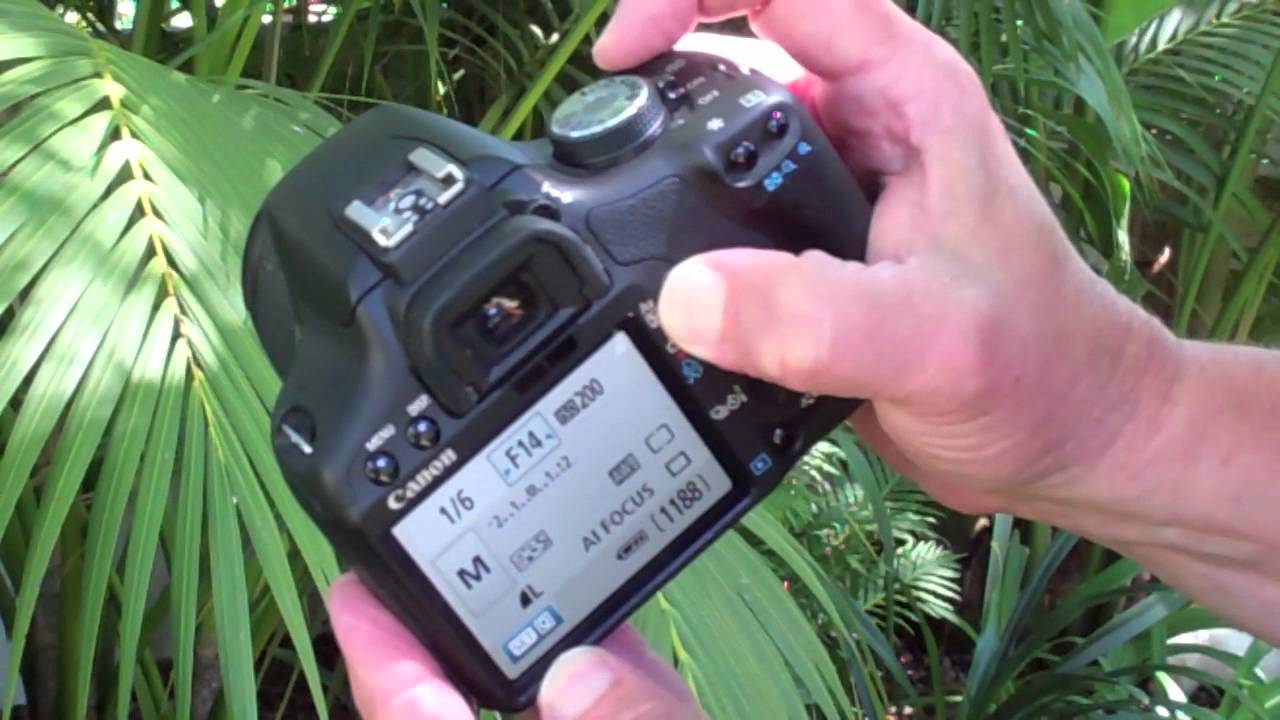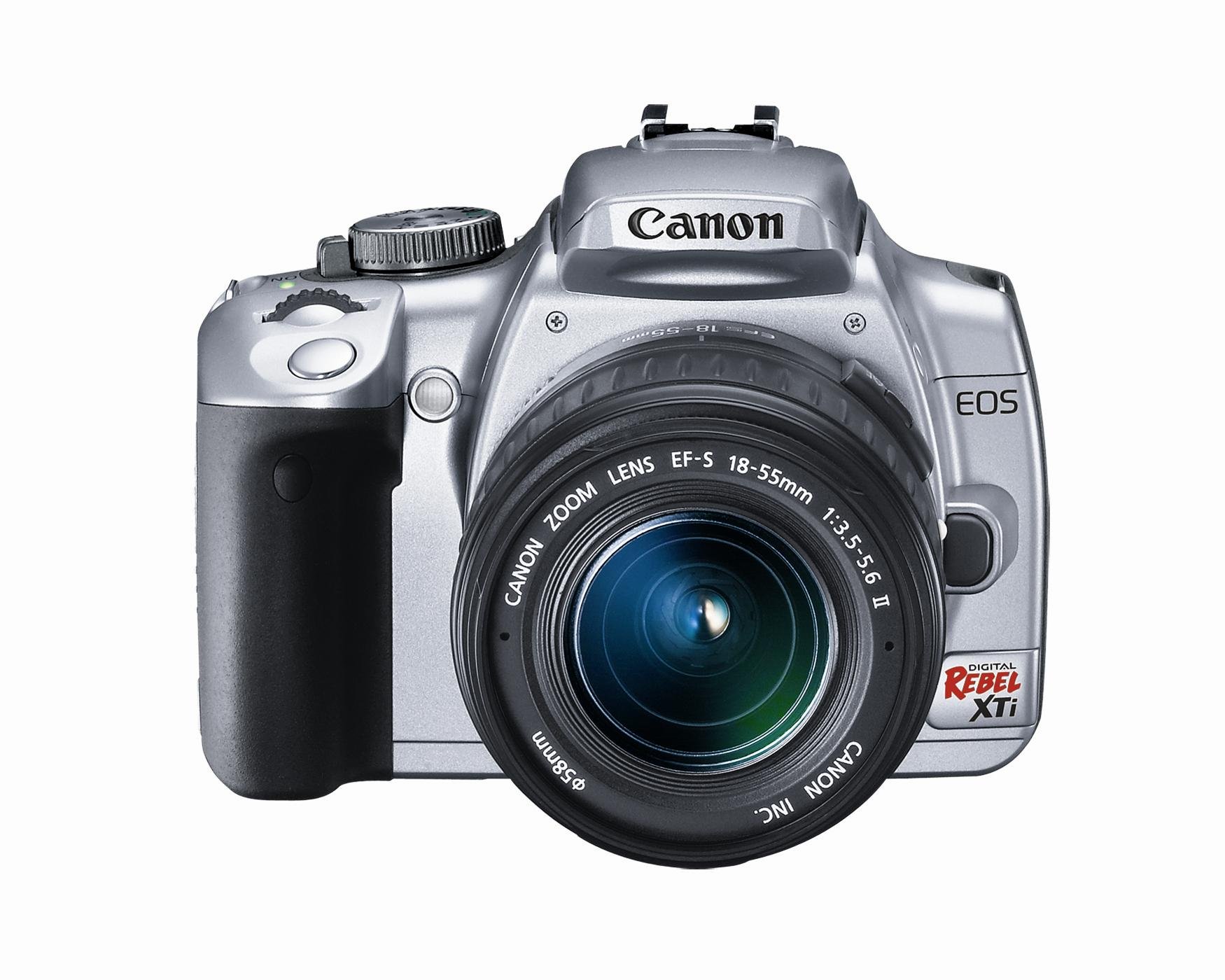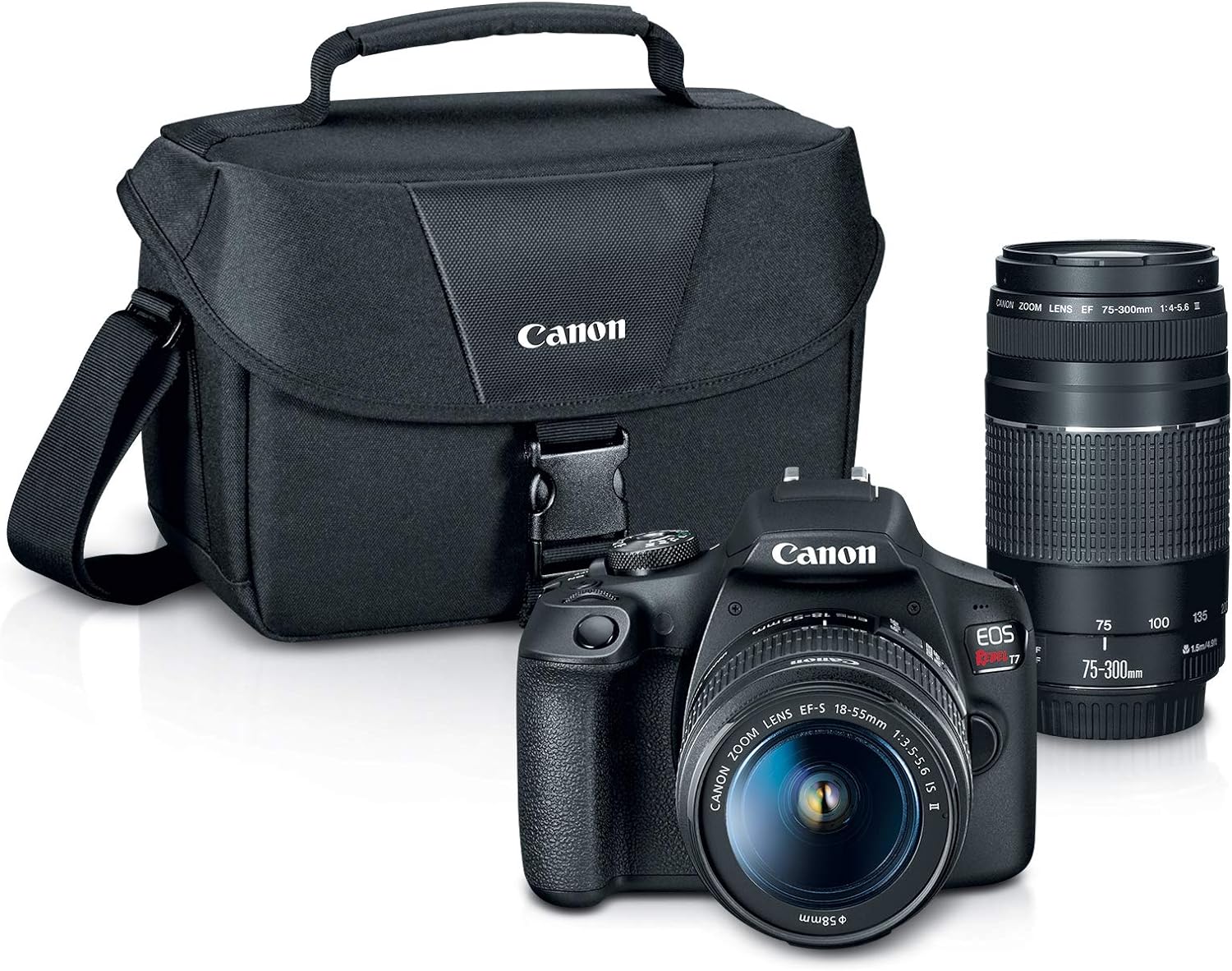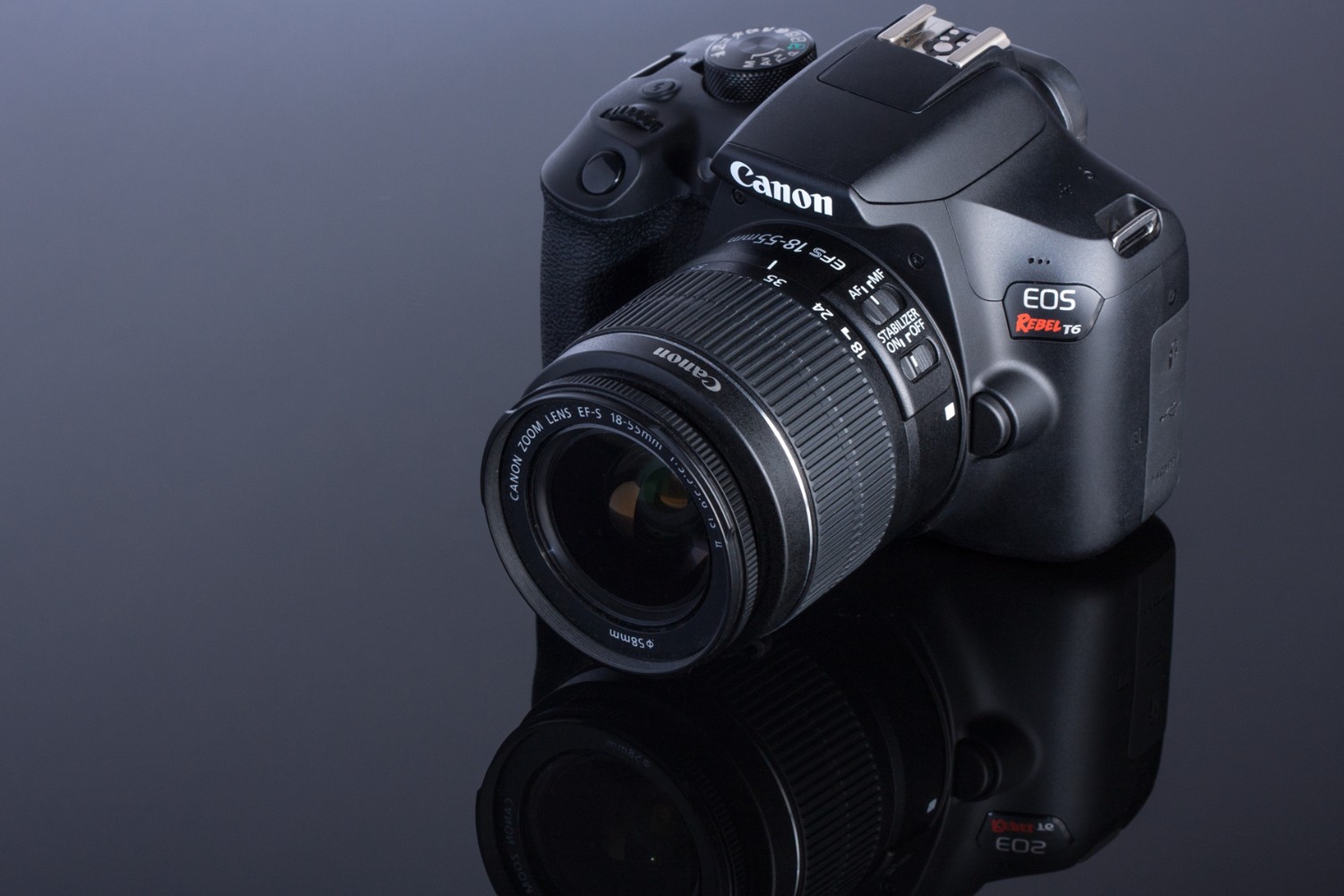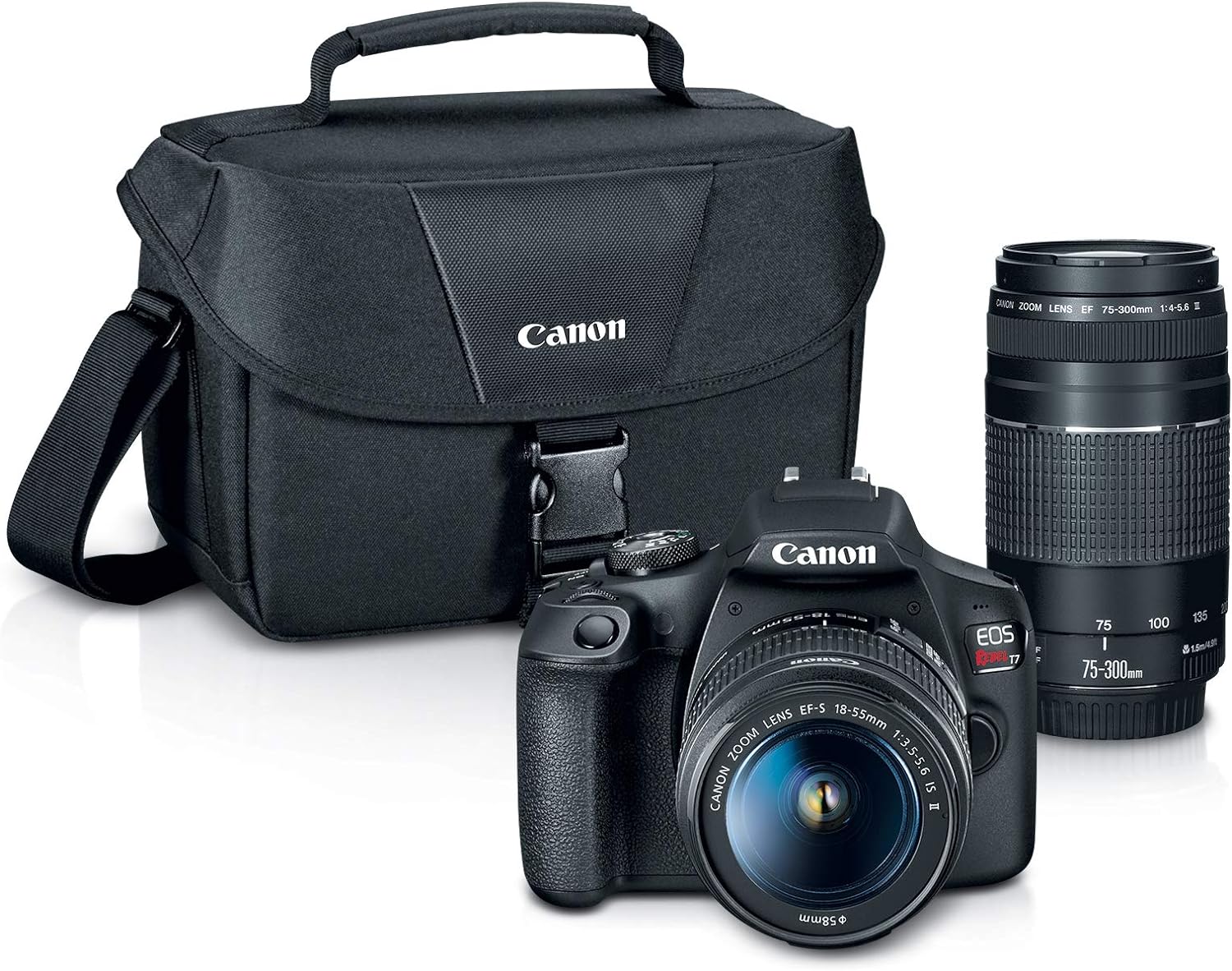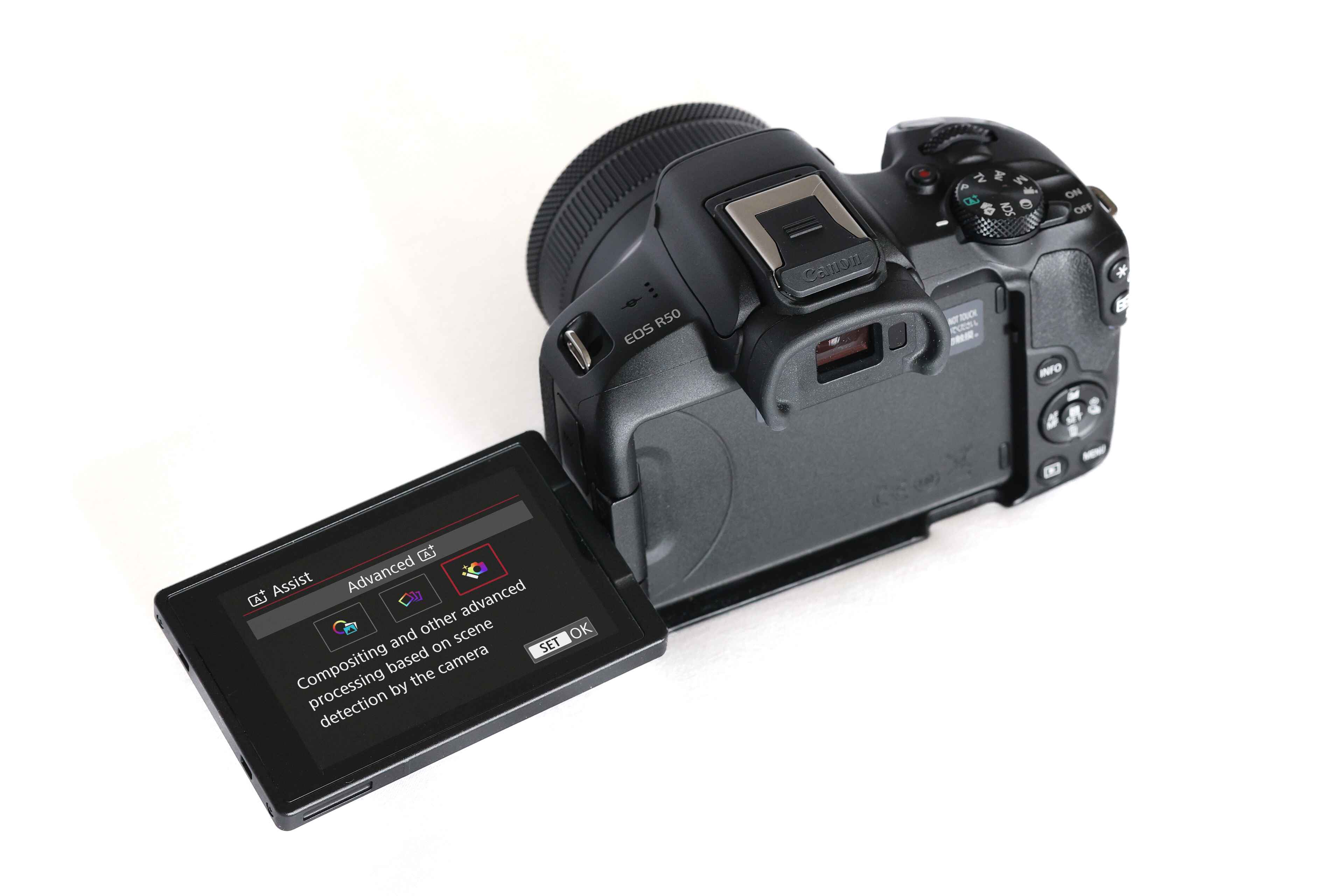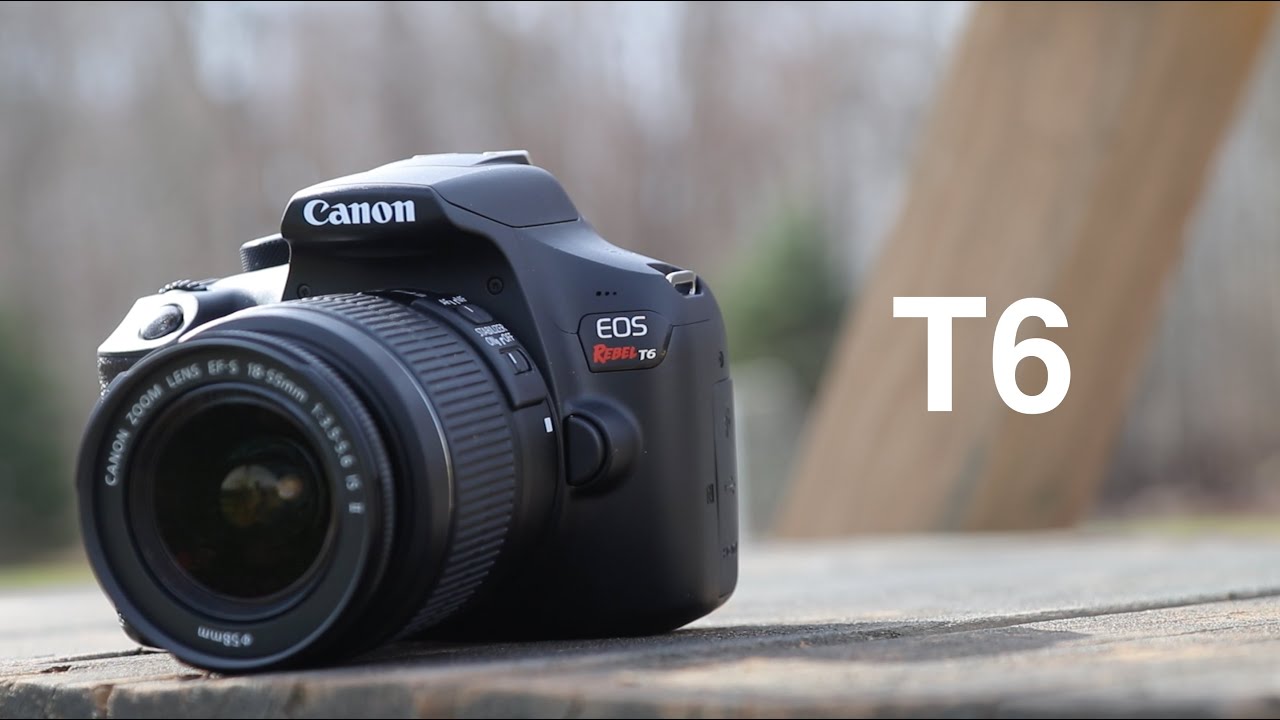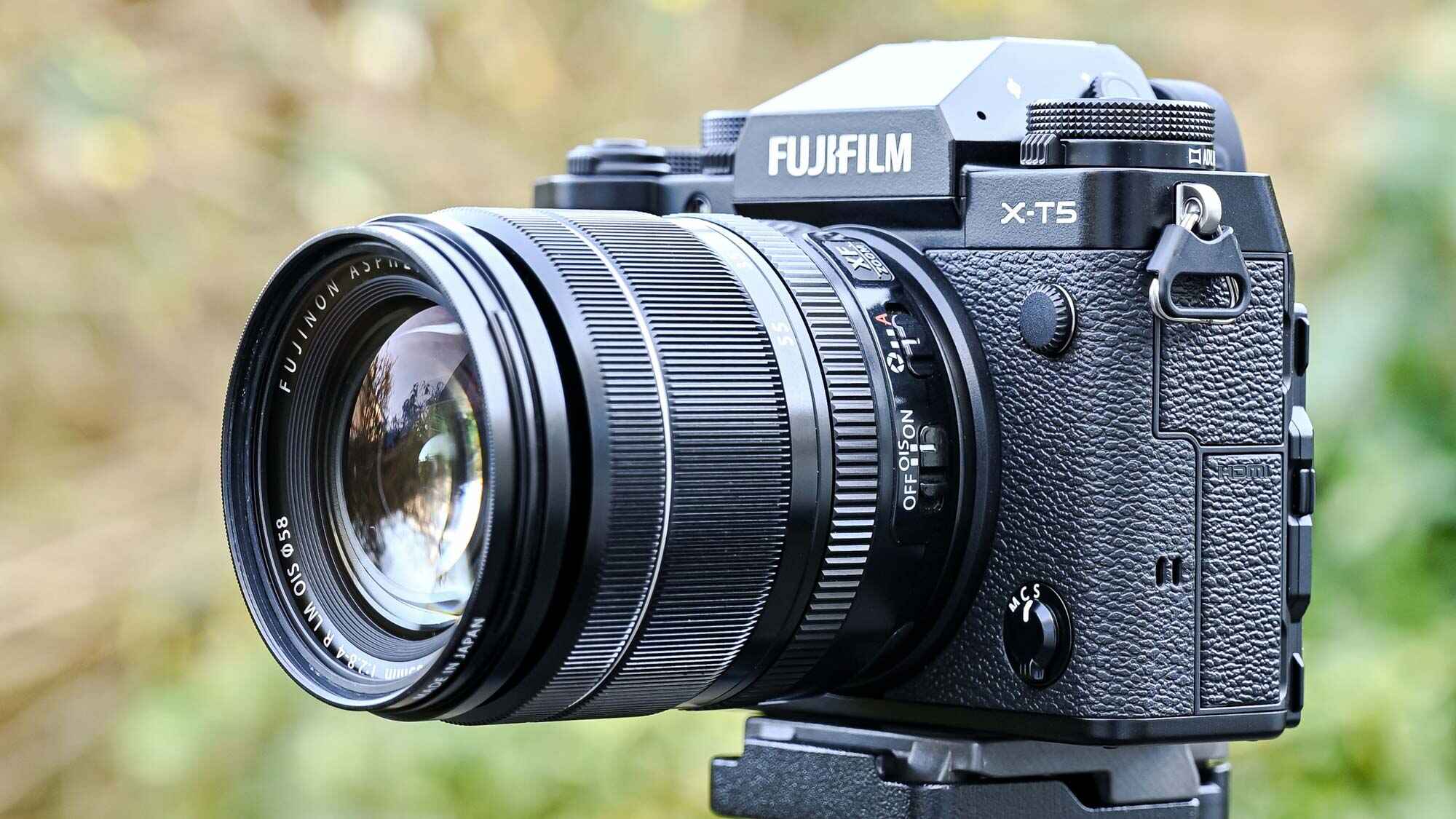Introduction
Are you the proud owner of a Canon Rebel DSLR camera? Are you eager to unleash its full potential and capture stunning images with precision and artistry? Understanding how to manually set your Canon Rebel DSLR camera can significantly elevate your photography game. While the camera's automatic settings can produce impressive results, mastering the manual settings opens up a world of creative possibilities, allowing you to tailor each shot to your exact specifications.
In this comprehensive guide, we will delve into the intricacies of manually setting a Canon Rebel DSLR camera, empowering you to take full control of your photographic endeavors. Whether you're a novice photographer seeking to expand your skills or an experienced enthusiast aiming to refine your craft, this exploration of manual settings will equip you with the knowledge and confidence to harness the true potential of your Canon Rebel DSLR camera.
By the end of this guide, you will be well-versed in adjusting crucial settings such as aperture, shutter speed, ISO, and manual focus, enabling you to capture breathtaking images that reflect your unique vision and artistic sensibilities. Let's embark on this enlightening journey to unlock the captivating world of manual photography with your Canon Rebel DSLR camera.
Understanding the Canon Rebel DSLR Camera
Before delving into the intricacies of manually setting your Canon Rebel DSLR camera, it’s essential to grasp the fundamental components and capabilities of this powerful photographic tool. The Canon Rebel series, renowned for its exceptional image quality and user-friendly interface, has garnered a devoted following among photography enthusiasts and professionals alike.
At the heart of the Canon Rebel DSLR camera is its advanced image sensor, which captures light and transforms it into stunning digital photographs. The camera’s sensor size, measured in megapixels, determines the level of detail and clarity in the images it produces. Understanding the nuances of sensor size can aid in making informed decisions when selecting the appropriate settings for different shooting scenarios.
Furthermore, the Canon Rebel DSLR camera boasts a versatile lens mount, allowing photographers to interchange lenses to achieve various perspectives and visual effects. Whether you prefer the wide-angle expansiveness of a zoom lens or the intimate depth of field provided by a prime lens, the camera’s compatibility with an array of lenses empowers you to tailor your photographic approach to suit your creative vision.
Equally important is familiarizing yourself with the camera’s intuitive control interface, including the mode dial, function buttons, and menu settings. These elements provide access to a myriad of shooting modes, exposure settings, and customization options, enabling you to adapt to diverse shooting conditions and artistic preferences with ease.
By gaining a comprehensive understanding of the Canon Rebel DSLR camera’s core components and functionalities, you will be primed to explore the realm of manual settings with confidence and proficiency. This foundational knowledge forms the bedrock upon which your mastery of manual photography with the Canon Rebel DSLR camera will flourish.
Manual Settings on a Canon Rebel DSLR Camera
Mastering the manual settings on your Canon Rebel DSLR camera empowers you to exert precise control over every aspect of your photographic composition. While the camera’s automatic modes offer convenience, immersing yourself in the realm of manual settings unleashes your creative potential and allows you to capture images that authentically reflect your artistic vision.
One of the key manual settings to familiarize yourself with is aperture, which regulates the size of the lens opening to control the amount of light entering the camera. Adjusting the aperture not only influences the exposure of your images but also determines the depth of field, impacting the sharpness and background blur in your photographs. Understanding how to manipulate the aperture settings enables you to craft visually compelling images with nuanced control over focus and composition.
Similarly, mastering the adjustment of shutter speed is paramount in manual photography. Shutter speed dictates the duration for which the camera’s shutter remains open, governing the amount of light that reaches the sensor and influencing the depiction of motion in your photos. Whether freezing fast-paced action with a swift shutter speed or capturing the graceful blur of a moving subject with a slower setting, the ability to manually control shutter speed empowers you to convey dynamic narratives through your imagery.
Another critical aspect of manual settings is the adjustment of ISO, which determines the camera’s sensitivity to light. Manipulating the ISO setting allows you to adapt to varying lighting conditions, from bright outdoor scenes to dimly lit interiors, without compromising image quality. Understanding how to optimize ISO settings equips you to capture captivating images across a spectrum of lighting environments, ensuring that your creative vision is never hindered by technical constraints.
Furthermore, delving into the realm of manual focus enables you to meticulously refine the sharpness and clarity of your subjects, transcending the limitations of autofocus and achieving precise control over the visual elements within your frame. By harnessing manual focus, you can imbue your images with a distinct artistic flair and convey your intended narrative with unparalleled precision.
With a firm grasp of these manual settings, you will embark on a transformative journey, transcending the realm of automated photography and embracing the boundless creative potential afforded by manual control. Through deliberate manipulation of aperture, shutter speed, ISO, and focus, you will craft images that resonate with authenticity and artistic expression, elevating your photography to new heights of mastery.
Setting Aperture
Understanding how to effectively set the aperture on your Canon Rebel DSLR camera is pivotal in shaping the visual impact and storytelling potential of your photographs. Aperture, denoted by the f-stop value, regulates the size of the lens opening, determining the amount of light that enters the camera and influencing the depth of field in your images.
When adjusting the aperture, a lower f-stop value, such as f/2.8, corresponds to a wider lens opening, permitting more light to reach the sensor and resulting in a shallow depth of field. This setting is ideal for isolating subjects against a beautifully blurred background, imparting a sense of intimacy and emphasis on the focal point. Portrait photography, where the subject’s distinctiveness is accentuated by a soft, defocused background, often benefits from employing a wide aperture setting.
Conversely, a higher f-stop value, such as f/16, signifies a narrower lens opening, restricting the amount of light that enters the camera and yielding a greater depth of field. This setting is advantageous for capturing expansive landscapes or intricate architectural details, as it ensures that a larger portion of the scene remains sharply in focus, from the foreground to the background. By utilizing a narrow aperture, you can encapsulate the entirety of a scene with pristine clarity, inviting viewers to immerse themselves in the intricate details of your composition.
Moreover, as you manipulate the aperture settings, it’s essential to consider the artistic implications of depth of field. Whether you seek to convey a sense of intimacy and selective focus or aim to showcase the intricate details of a sweeping vista, the aperture serves as a potent tool for imbuing your images with a distinct visual character and narrative resonance.
By mastering the art of setting aperture on your Canon Rebel DSLR camera, you will wield the power to infuse your photographs with evocative depth and visual allure, transcending mere technical adjustments to craft images that resonate with emotive and aesthetic impact.
Setting Shutter Speed
Manipulating the shutter speed on your Canon Rebel DSLR camera is a fundamental aspect of manual photography that profoundly influences the visual narrative and emotive impact of your images. Shutter speed dictates the duration for which the camera’s shutter remains open, determining the amount of light that reaches the sensor and capturing the essence of motion within your photographs.
When adjusting the shutter speed, a fast setting, such as 1/1000 of a second, is adept at freezing swift movement and preserving intricate details with impeccable clarity. This rapid shutter speed is ideal for capturing dynamic subjects in action, such as athletes in mid-stride or wildlife in rapid motion, ensuring that each fleeting moment is encapsulated with precision and vigor.
Conversely, employing a slower shutter speed, such as 1/30 of a second, introduces a captivating sense of motion blur, imparting a compelling dynamism to your images. This deliberate blurring effect is particularly effective when photographing flowing water, bustling cityscapes, or the graceful movements of dancers, infusing your compositions with a palpable sense of energy and fluidity.
Furthermore, the manipulation of shutter speed enables you to convey the passage of time and the emotive essence of movement within your photographs. Whether evoking a sense of urgency and intensity through high-speed action or imbuing your images with a serene and contemplative ambiance through deliberate motion blur, the control over shutter speed empowers you to craft images that resonate with narrative depth and visual poetry.
As you explore the myriad possibilities of setting shutter speed, it’s essential to consider the interplay between light, motion, and storytelling within your compositions. By deftly adjusting the shutter speed on your Canon Rebel DSLR camera, you will imbue your images with a profound sense of temporal artistry, capturing moments that transcend mere visual representation to evoke emotive narratives and immersive experiences.
Adjusting ISO
Understanding how to adeptly adjust the ISO settings on your Canon Rebel DSLR camera is integral to harnessing the full potential of your photographic endeavors across diverse lighting conditions. ISO, which stands for International Organization for Standardization, denotes the camera’s sensitivity to light, with higher ISO values amplifying sensitivity and lower values reducing it. Mastery of ISO manipulation equips you to navigate challenging lighting scenarios with finesse, ensuring that your images maintain optimal quality and visual integrity.
When confronted with ample natural light, such as a sunlit landscape or a well-lit indoor setting, selecting a lower ISO setting, such as ISO 100 or 200, is advantageous. By opting for a lower ISO, you can capture images with minimal digital noise and maximal detail, harnessing the camera’s native sensitivity to light to render scenes with pristine clarity and tonal fidelity.
Conversely, in low-light environments or situations demanding swift shutter speeds, a higher ISO setting, such as ISO 1600 or 3200, becomes indispensable. Elevating the ISO sensitivity enables the camera to amplify available light, facilitating faster shutter speeds and expanded shooting capabilities in dimly lit settings. While higher ISO settings may introduce a degree of digital noise, the tradeoff is justified by the ability to capture compelling images in conditions that would otherwise be challenging to navigate.
Moreover, the nuanced manipulation of ISO settings allows you to adapt to dynamic lighting conditions and fleeting photographic opportunities without compromising image quality. By deftly adjusting the ISO on your Canon Rebel DSLR camera, you can seamlessly transition from sun-drenched outdoor scenes to atmospheric indoor settings, ensuring that your creative vision remains unhindered by technical constraints.
As you navigate the realm of ISO adjustments, it’s essential to strike a balance between sensitivity and image fidelity, tailoring the ISO setting to suit the specific demands of each photographic scenario. By exercising discernment and technical acumen in manipulating ISO, you will fortify your ability to capture captivating images across a spectrum of lighting environments, infusing your photographic repertoire with versatility and visual dynamism.
Using Manual Focus
Embracing the art of manual focus on your Canon Rebel DSLR camera empowers you to wield precision and creative control over the sharpness and visual narrative of your photographic compositions. While autofocus functionality offers convenience in swiftly capturing scenes, manual focus transcends technical automation, allowing you to intricately refine the visual elements within your frame with deliberate intention and artistry.
Engaging manual focus enables you to meticulously dictate the focal point of your images, ensuring that your subjects are rendered with impeccable clarity and visual impact. By delicately adjusting the focus ring on your lens, you can fine-tune the sharpness of your subjects, attaining a level of detail and visual allure that elevates your images to a realm of artistic refinement.
Furthermore, manual focus empowers you to navigate complex or challenging scenes that may confound autofocus systems, such as capturing intricate macro compositions or delineating precise architectural details. The tactile act of manually calibrating focus imbues your photographic process with a profound sense of craftsmanship and attentive precision, resulting in images that resonate with a palpable sense of artistry and technical mastery.
Beyond technical proficiency, manual focus invites a deeper engagement with the visual narrative and emotive resonance of your images. By intimately involving yourself in the act of refining focus, you develop a heightened sensitivity to the nuances of composition and storytelling within your photographs, transcending mere technical adjustments to infuse your images with a profound sense of visual poetry and narrative depth.
As you traverse the realm of manual focus on your Canon Rebel DSLR camera, it’s essential to approach the process with patience, attentiveness, and a discerning eye for detail. Embrace the tactile artistry of manually refining focus, allowing each adjustment to serve as a deliberate expression of your creative vision and a testament to your dedication to the craft of photography.
By integrating manual focus into your photographic repertoire, you will imbue your images with a rarefied level of precision and emotive resonance, transcending the realm of technical adjustments to craft compositions that reflect your unique artistic sensibilities and narrative intent with unparalleled clarity and visual allure.
Conclusion
Congratulations on embarking on this enlightening journey to explore the manual settings of your Canon Rebel DSLR camera. By delving into the intricacies of aperture, shutter speed, ISO, and manual focus, you have unlocked a realm of creative potential and technical mastery that will undoubtedly elevate your photography to new heights.
As you navigate the art of manual photography, remember that each setting is a brushstroke in the canvas of your visual storytelling. The delicate manipulation of aperture allows you to shape depth and focus, while the control of shutter speed captures the essence of motion and time. Adjusting ISO sensitivity empowers you to conquer diverse lighting conditions, and engaging manual focus invites a tactile artistry that transcends mere technical adjustments.
Armed with this newfound knowledge, you are poised to craft images that authentically reflect your artistic vision and narrative intent. Whether capturing the fleeting dance of light and shadow in a captivating landscape or immortalizing the nuanced expressions of human emotion, your Canon Rebel DSLR camera now serves as a conduit for your boundless creativity and storytelling prowess.
Embrace the art of manual photography as a journey of continual exploration and refinement. Experiment with different settings, immerse yourself in diverse photographic scenarios, and allow your unique perspective to infuse each image with an indelible imprint of your creative spirit. As you hone your skills and cultivate your artistic voice, your photographic odyssey with the Canon Rebel DSLR camera will unfold as a rich tapestry of visual narratives and emotive resonances.
May each photograph you capture serve as a testament to your dedication to the craft and a celebration of the profound beauty that surrounds us. With the mastery of manual settings on your Canon Rebel DSLR camera, you have embarked on a transformative odyssey that will continue to inspire, challenge, and enrich your photographic pursuits for years to come.







